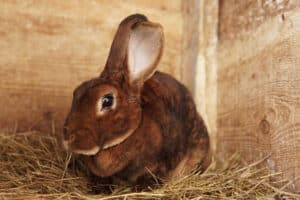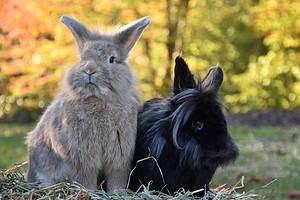Have you been brainstorming ways you can spice up your rabbit’s diet? If so, you’ll be happy to learn that incorporating leafy greens like lettuce are nutritious and delicious! Rabbits love to crunch on this healthy treat, but before you serve it up, follow these five tips for the best results.
1. Offer Lettuce in Addition to Dietary Staples
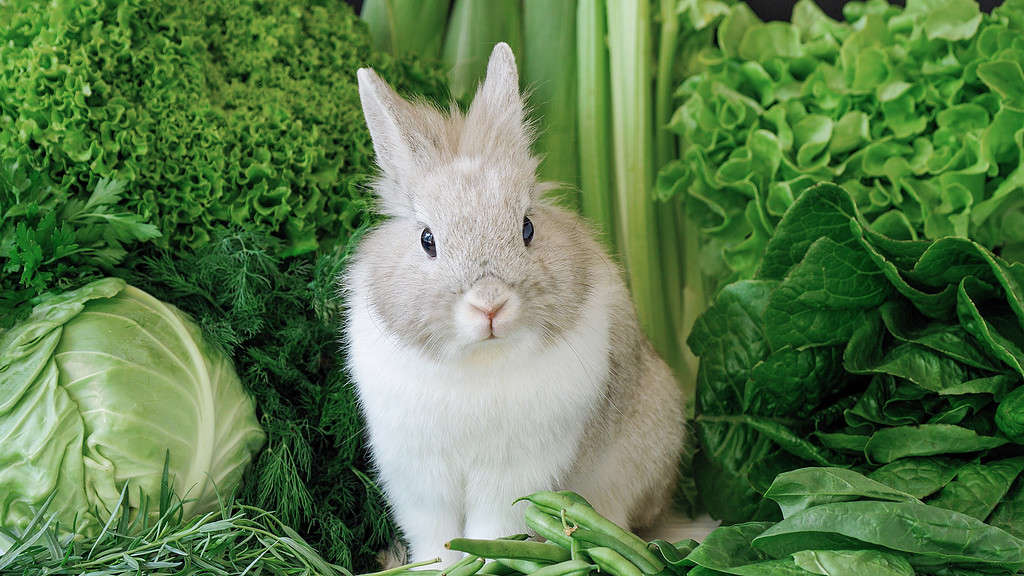
The diet of a rabbit should consist of leafy greens, vegetables, fruit, and hay.
©Olha/iStock via Getty Images
Even though some people think of lettuce as rabbit food, rabbit owners know that the main portion of their diet should consist of high-quality hay and vegetables. However, having a little treat once in a while doesn’t hurt! As long as you offer lettuce in addition to their dietary staples, they can certainly enjoy it once or twice a week. As with anything, be sure to let them indulge in moderation.
2. Provide Your Rabbit With a Variety of Leafy Greens
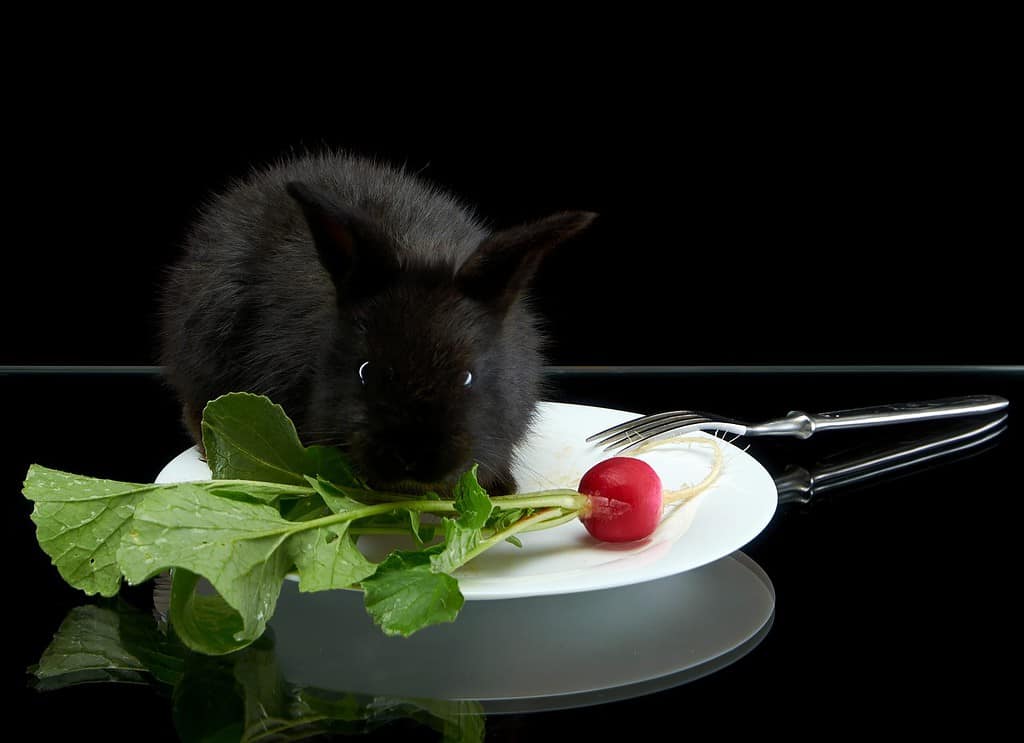
If your rabbit turns their nose up to lettuce at first, try to offer it in combination with other leafy greens.
©AkaciaArt/Shutterstock.com
Although you may not have known, rabbits are capable of eating a variety of leafy greens in addition to lettuce. According to the Rabbit Welfare Association, there are many options you can provide your rabbit with. Dark green cabbage, basil, spinach, radish greens, sage, dill, sprouts, mint, and oregano are all perfectly healthy and nutritious, so put some in your cart alongside lettuce when you’re out shopping for your rabbit!
3. Wash Your Lettuce Thoroughly
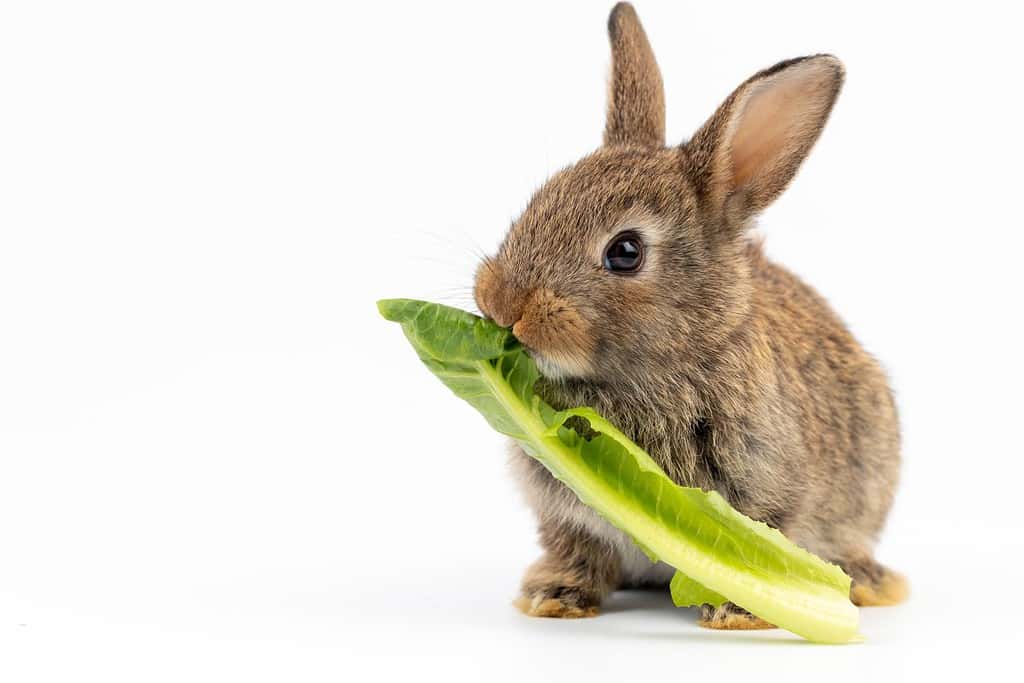
In addition to being less appealing, unwashed produce can be potentially harmful to rabbits.
©UNIKYLUCKK/Shutterstock.com
Much like humans, rabbits prefer to eat perfectly clean produce. Fruits and vegetables at the grocery store may still may have pesticide residue, dirt, germs, or bacteria on them. Rabbits eat their vegetables raw, so cooking won’t be able to help prevent the transfer of these without washing. That being said, try to wash your lettuce as best as you can before offering it to your little rabbit friend.
4. Make Sure The Lettuce Is Fresh
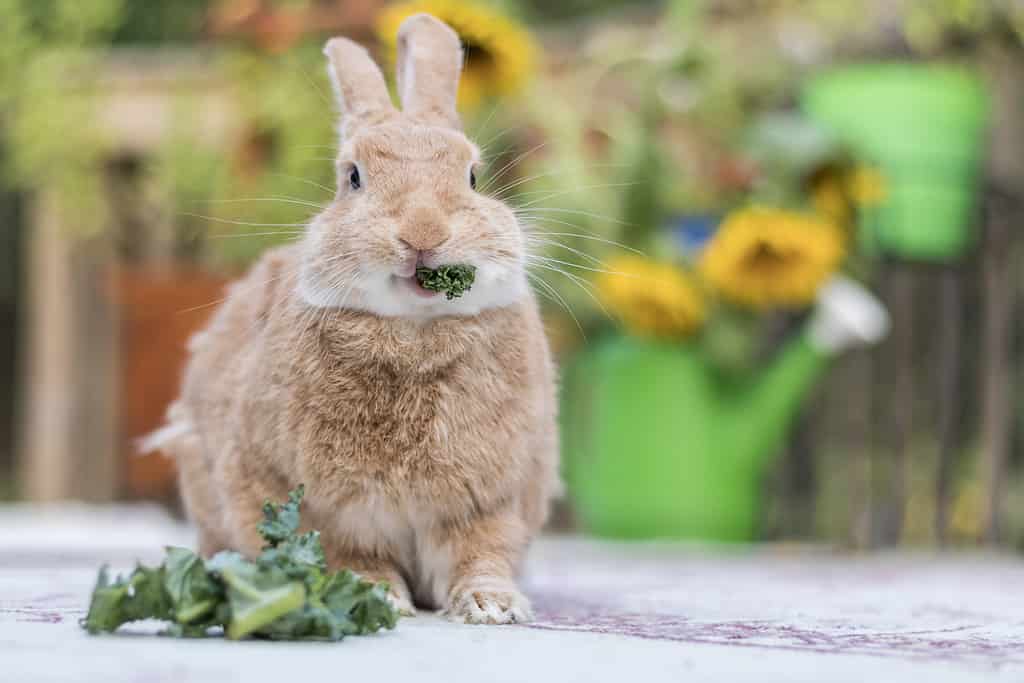
Roughly 80% of your rabbit’s diet should be grass and hay.
©Rabbitti/iStock via Getty Images
In addition to being clean, fresh lettuce is always best. Rabbits aren’t particularly picky eaters. However, they might turn their nose up to fruits and vegetables that aren’t up to their freshness standards. That being said, if you’re having a hard time getting your rabbit to incorporate lettuce into their diet, it might be because it’s past its prime.
5. Feed Your Rabbit Darker Lettuce

In captivity, a healthy rabbit can live for up to 12 years.
©Kviki_Viki/Shutterstock.com
When it comes to lettuce, darker is almost always better. Lighter varieties such as Iceberg lettuce contain lactucarium and calcium oxalate, which is potentially damaging in large quantities. Instead, opt for Romaine or Lamb’s lettuce as they are proven to be rabbit-safe and contains essential vitamins and nutrients. Plus, rabbits love the crunchy texture!
Thank you for reading! Have some feedback for us? Contact the AZ Animals editorial team.





